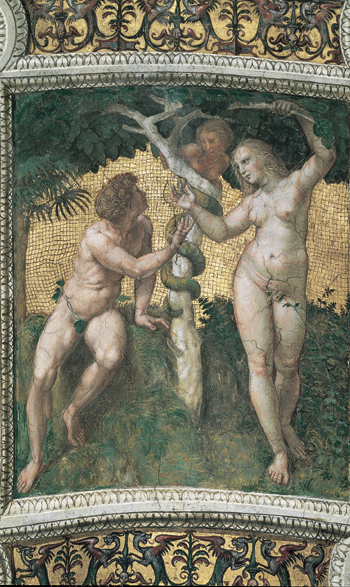Image Details

Scala/Art Resource, NY
A cherubic serpent gazes tenderly at Adam in this rendition of the Temptation, painted by Raphael in 1508 on the walls of Pope Julius II’s study in the Vatican. The artist carefully applied squares of gold leaf in imitation of ancient mosaic tiles behind the figures—perhaps to make his image appear to be an antique, and therefore enduring, portrait of lost innocence.
Renaissance artists often gave the perceptive and persuasive Serpent a face, though not always such an artless one. In the midrash, rabbinic elaborations of the biblical stories, the Serpent also seems almost human—standing erect and reasoning effectively with Eve. According to the midrash, he has been placed in the Garden of Eden because of his powers of reason; the Serpent oversteps his bounds only when he resorts to physical force, pushing Eve into the tree of knowledge to convince her she will not be harmed by it.
The pope had already commissioned Michelangelo to paint the Sistine Chapel ceiling when he summoned Raphael (then age 25) to Rome to decorate his private library in the Vatican Palace. Michelangelo would soon borrow from Raphael the motif of a human-headed Serpent, when he painted the Temptation and Fall on the chapel ceiling.
